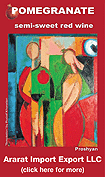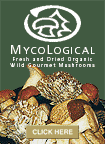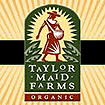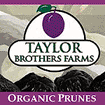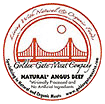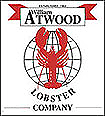Will
smoke taint wines?
Growers,
winemakers will have to wait and see whether
wildfires scorched more than acreage
By
KEVIN McCALLUM
THE PRESS DEMOCRAT
Now
that the smoke has begun to clear from North Coast vineyards,
questions are swirling about whether it will linger in the 2008
vintage.
|
KENT
PORTER / The Press Democrat |
Smoke
from wildfires makes the sun look red as it sets over a vineyard
off of Geysers Road, east of Geyserville. Some winery experts
are worried about the effects lingering smoke from wildfires
in Mendocino County could have on this year's grape crop from
that area, as well as crops in Sonoma and Napa counties.
Grape
growers and winemakers closest to the wildfires are concerned
that the vines may absorb enough of the unsavory smoke compounds
to taint the wines.
"It's
definitely a topic everyone is discussing up here," says
Tex Sawyer, winemaker at two sparkling wine producers in Mendocino
County's Anderson Valley, Roederer Estate and Scharffenberger
Cellars.
For
three weeks, smoke from wildfires raging out of control in timberlands
just to the west have cast an acrid pall over the bucolic Anderson
Valley.
The
Cold Spring Complex of fires, which has burned 6,500 acres to
date, has been one of the most stubborn of the approximately
2,010 separate blazes ignited by a lightning storm that struck
June 21.
As
of Wednesday, it continued to burn while 95 percent of the other
fires in the county scorching 53,000 acres had been contained.
Firefighting
helicopters have been regular visitors at winery irrigation
ponds, and vineyard workers have been sent home many days out
of concern for their health.
With
the start of harvest just a few weeks away, concern is turning
to the health of the grapes.
"We certainly have a concern that something could happen,
but we really don't know," Sawyer said. "We're basically
just waiting to see what develops."
While Mendocino's wineries may be on the front lines in the
debate, some suggest plenty of other wineries need to be aware
of the potential problems. They say smoke has been thick enough
and hung around long enough that vineyards all over the state
could be affected.
"They
should be concerned, and so should the wineries in Sonoma and
Napa," said Bob Kreisher, president of Memstar North America,
a Santa Rosa-based wine filtration company that offers a service
to remove smoky flavors from tainted wine.
Government
sponsored studies in Australia have shown that exposure for
just a few hours to smoke from brush fires is enough to taint
the taste in wine, Kreisher said. By comparison, smoke has been
hanging over parts of the North Coast for weeks, he noted.
The
timing of the fires couldn't have been worse, Kreisher said,
because the impact is greatest not when the grapes are close
to harvest, but mid-season when they are growing rapidly in
size.
The
compounds from the smoke are absorbed by the leaves, transferred
to the fruit and then released during fermentation, Kreisher
said.
The
result is wines with a slight bouquet of bacon or wet ashtray,
Kreisher said.
Others disagree with Kreisher's assessment, pointing out that
he and other companies that claim to remove smoke taint have
a vested interest in it being perceived as a widespread problem.
Kreisher
gave an impromptu presentation at a meeting of a group of Sonoma
vineyard owners and managers last week, and some felt he was
long on fear and short on facts.
Nick
Frey, president of the Sonoma Winegrape Commission, said Kreisher's
talk was informative but highly speculative.
"I
would say he was speaking from experience. The question is,
is that experience relevant?" Frey said.
One
key question Frey has is whether parallels to Australia, where
much of the existing research on smoke taint has been conducted,
can be drawn with conditions in the U.S. For one, brush fires
in Australia often involve eucalyptus trees, which are filled
with oils and resins that probably release different compounds
in smoke than those from redwood and fir forests.
Another
question is whether smoke taint is all that bad.
Tom
DiBello, winemaker at Cedar Creek Winery in the Okanagan Valley
in British Columbia, claims to have had the highest level of
smoke-tainted wine ever recorded -- more than 20 times detectable
levels.
Fires
hung over his pinot noir vineyards for more than a month, to
the point where it was difficult to breath.
"The
smoke actually integrates into the skin, so it's not something
that you can wash off," he said.
He
hired a Napa company, Wine Secrets, to remove the taint, and
was amazed at the results.
"It was remarkable how well it worked," he said. He
sold the wines at a discount, he said.
The
Cavedale Road fire in the Sonoma Valley in 1996 burned all around
the famed Monte Rosso vineyard, burning in some cases right
up to edges, according to Carolyn Martini, president of Martini
Winery in the Napa Valley.
The
wine made from the cabernet sauvignon grapes had a hint of smokiness,
she said.
"It did show up in a slightly smoky flavor in the wine,
which people liked," she said.
The
wine received excellent scores, and the winery didn't need to
put the wine through filtration processes to remove the flavors,
which she thinks mellowed through fermentation and aging.
The
taste is not dissimilar to the flavors imparted to wine by oak
barrels that are slightly toasted, she said. While the wines
were well received, she wouldn't want to repeat the harrowing
experience
"It's
probably cheaper to char your barrels than burn your vineyard,"
Martini said.
Research on the subject is limited, and debates about the effect
of smoke on wines are inconclusive without data, said Rodger
Boulton of UC Davis.
"We
have a golden opportunity to learn something about that, and
there seems to be a resistance or an absence of willingness
to do that," Boulton said.
Few
growers in Sonoma County seem worried, probably because they
know there's little use in worrying until they know whether
they have an issue, Frey said.
"Until
we get through this harvest, I don't think anyone can do anything
more than speculate," he said.
You
can reach Staff Writer Kevin McCallum at 521-5207 or kevin.mccallum@pressdemocrat.com.





